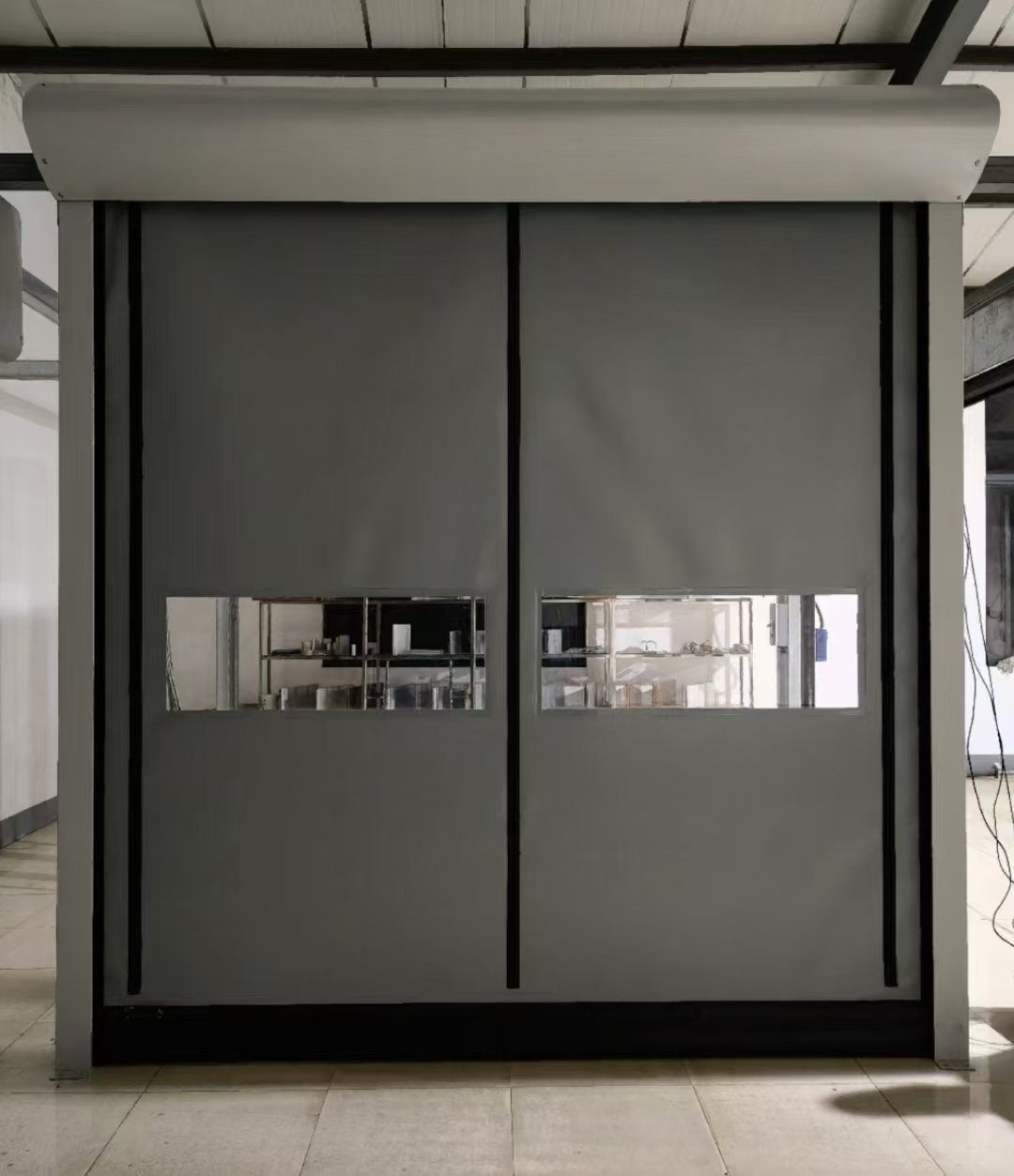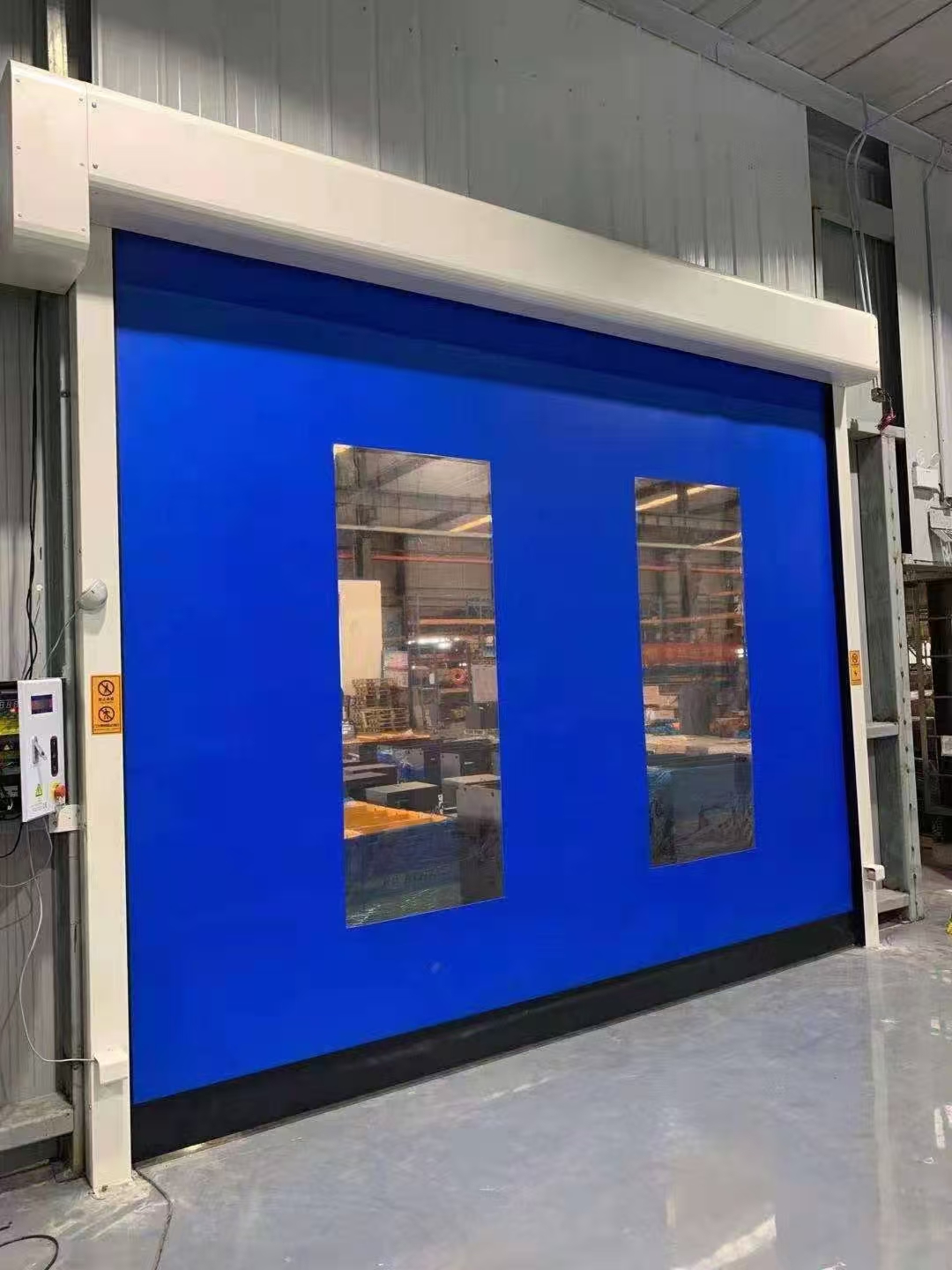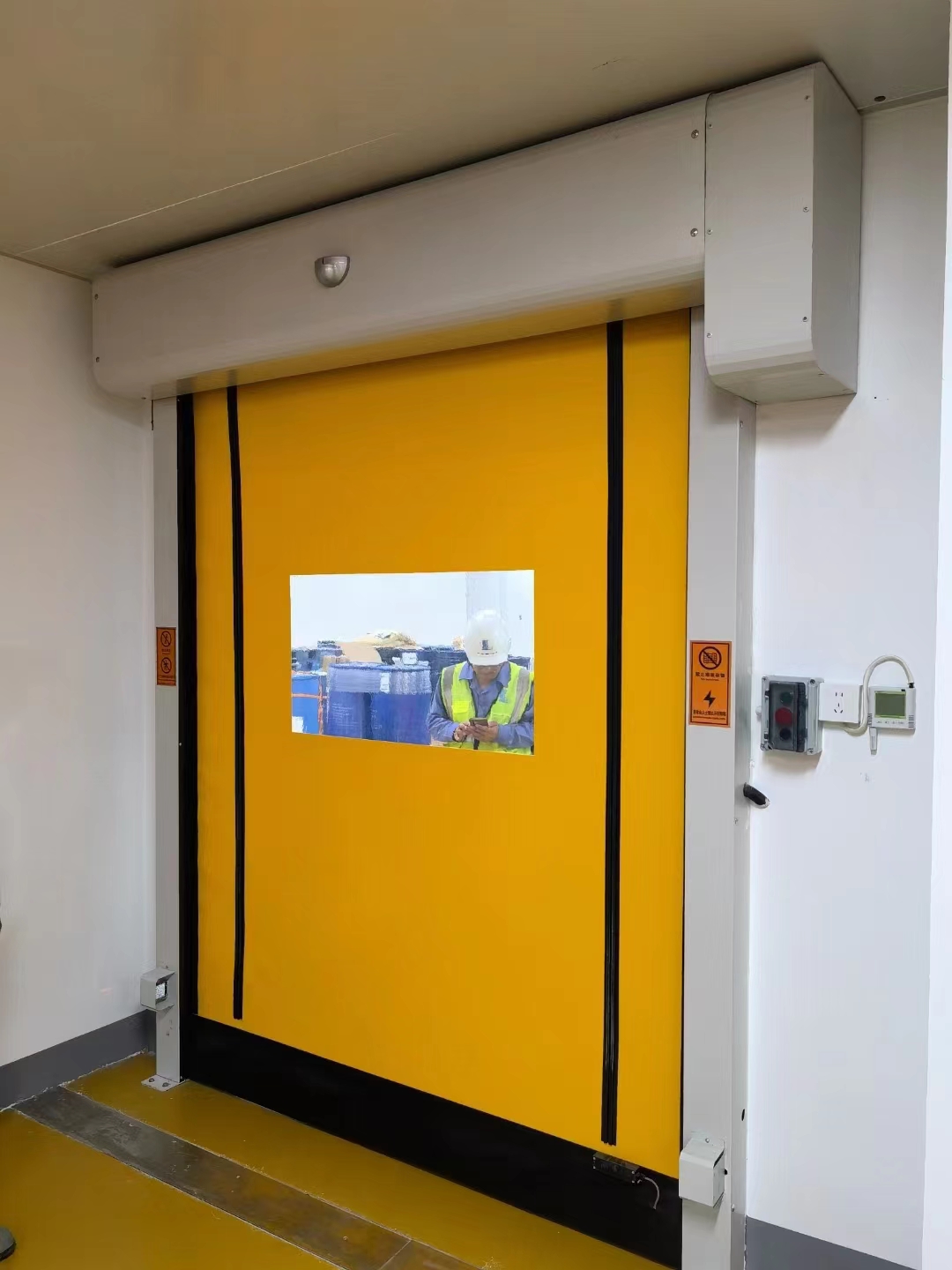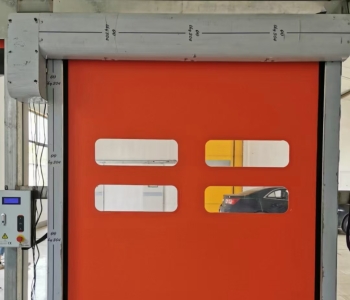Zipper-Style Rapid Doors vs. Traditional Cleanroom Doors: Key Advantages
1. Sealing Performance
Zipper-Style Rapid Doors:
Interlocking zipper mechanism: Precision-engineered tracks and curtains create near-seamless closure, reducing air leakage to ≤16m³/㎡·h (exceeding EN 13241-5 standards).
Pressure resistance: Maintains airtightness under 30–50Pa pressure differentials (equivalent to 5–7 Beaufort wind force), ideal for ISO Class 5–8 cleanrooms.
Traditional Cleanroom Doors:
Reliant on brushes or rubber seals prone to deformation and wear, leading to gaps over time.
Limited effectiveness in maintaining pressure integrity, increasing contamination risks.
Advantage: Zipper-style doors provide 85% lower particulate infiltration in high-traffic environments.

2. Speed & Energy Efficiency
Zipper-Style Rapid Doors:
Rapid cycling: 0.6–2.5 m/s operation reduces air exchange time by 40–60% vs. traditional doors (≤0.5 m/s).
Insulation: Polyurethane foam cores minimize thermal transfer, stabilizing temperatures within ±1°C and cutting HVAC energy costs by 18–25%.
Traditional Cleanroom Doors:
Slow operation prolongs air exchange, straining climate control systems.
Poor insulation leads to frequent temperature/humidity fluctuations.
Advantage: Ideal for cold storage and high-frequency access zones like pharmaceutical airlocks.
3. Durability & Maintenance
Zipper-Style Rapid Doors:
Material resilience: Anti-static PVC (0.8–2.5 mm) or stainless steel frames withstand ≥1 million cycles (5× traditional door lifespan).
Modular design: Replaceable components reduce downtime by 70% during repairs.
Traditional Cleanroom Doors:
Frequent seal replacement and curtain degradation increase lifetime costs.
Average lifespan of <200,000 cycles in industrial settings.
Advantage: Lower total cost of ownership (TCO) over 10-year service periods.

4. Smart Integration
Zipper-Style Rapid Doors:
IoT-enabled: Real-time monitoring of cycle counts, energy use, and seal integrity via Modbus/Profibus protocols.
Automation synergy: PLC integration with AGVs enables <0.5s response times for JIT logistics.
Touchless operation: Radar/magnetic sensors eliminate cross-contamination risks.
Traditional Cleanroom Doors:
Limited to basic manual/automatic controls without data connectivity.
No predictive maintenance capabilities.
Advantage: Enables Industry 4.0-ready cleanrooms with 65% lower unplanned downtime.
5. Safety Compliance
Zipper-Style Rapid Doors:
Triple redundancy: Infrared light curtains, collision buffers, and emergency stops meet ANSI/UL 325 standards.
Hazardous environments: ATEX/IECEx-certified models available for explosive atmospheres.
Traditional Cleanroom Doors:
Basic safety sensors lack redundancy, increasing accident risks.
Rarely compliant with stringent industrial safety certifications.
Advantage: Reduces workplace incidents by 90% in high-risk sectors like chemical processing.

6. Customization & Adaptability
Zipper-Style Rapid Doors:
15+ configurations: Curved/angled tracks, insulated variants (-40°C to +80°C), and antimicrobial coatings.
Architectural flexibility: Supports non-standard openings (e.g., overhead or recessed installations).
Traditional Cleanroom Doors:
Limited to standard sizes and materials.
Minimal customization for specialized industries.
Advantage: Accelerates cleanroom retrofits by 50% in complex facilities.
Summary
Zipper-style rapid doors outperform traditional cleanroom doors across six critical dimensions:
Sealing: 85% lower particulate ingress in ISO Class 5–8 environments.
Efficiency: 25% energy savings via rapid cycling and thermal insulation.
Durability: 5× longer lifespan with modular maintenance.
Intelligence: IoT integration for predictive analytics and automation.
Safety: Certified compliance for high-risk industrial applications.
Customization: Rapid deployment in non-standard architectures.
Recommended Products
up to dateArgentina Automatic Door Accessories
- High Speed Door Zippers Industrial Door Zippers
- Safety Beam Sensor Use for Automatic Door
- Wireless Hand Sensor Switch For Automatic Door
- Hospital Door Foot Sensor
- Automatic Sliding Door System Wireless Touch Press Switch
- Automatic Sliding Door IP65 Waterprooft Wireless Hand Press Switch
- Automatic Door Microwave Sensor
- Reflective Type Infrared Detector
- Automatic High Speed Door Infrared Radar Sensor CNB-204G
- Aluminum Alloy Wind Section For PVC rapid roller shutter door
- Aluminum Bottom Section For PVC high speed rolling shutter door
- Good Quality Door Hardware Strip Brush for High-speed Door Rail
- High Speed Door Fast Door Servo Motor Permanent Magnet AC-Synchronous Servo Motor with Worm Reductio







 English
English 한국어
한국어 日本語
日本語 Deutsch
Deutsch русский
русский بالعربية
بالعربية TÜRKÇE
TÜRKÇE português
português คนไทย
คนไทย Français
Français 简体中文
简体中文 繁體中文
繁體中文